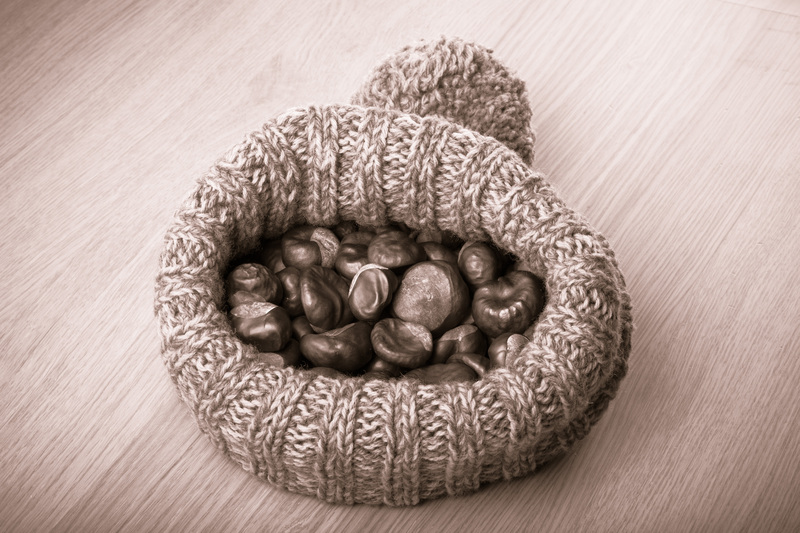DIY Genius: Upcycling Trash to Design One-of-a-Kind Furnishings
Transforming discarded items into extraordinary home decor isn't just a trend—it's a movement. Whether you're passionate about sustainability or simply love expressing your creativity through DIY projects, upcycling trash into unique furniture pieces is a rewarding way to decorate while helping our planet. In this comprehensive guide, we'll uncover brilliant upcycling ideas, essential tips, and step-by-step advice to help you become an upcycling genius, turning "trash" into treasured, designer furnishings.

What is Upcycling and Why Does it Matter?
Upcycling refers to the process of taking waste materials or unwanted products and transforming them into useful, valuable, and aesthetically pleasing items. Unlike recycling, which breaks materials down to create something new, upcycling finds creative ways to reuse items in their current form—with a little ingenuity.
- Reduces landfill waste: Upcycling keeps everyday trash out of dumpsites, benefiting the environment.
- Conserves resources: You'll save energy and natural resources by reusing materials rather than manufacturing new ones.
- Encourages creativity: Each upcycled piece reflects your imagination and personal style.
- Affordable home decor: You get one-of-a-kind furniture without the high price tag!
Common Materials to Upcycle for DIY Furniture
With a little vision, almost anything headed for the trashcan can serve as raw material for your next project. Here are some commonly upcycled items:
- Wooden pallets (from shipping crates or stores)
- Old tires and wheels
- Glass bottles and jars
- Wine corks
- Plastic containers
- Discarded doors and windows
- Metal cans and buckets
- Suitcases
- Drawers from broken furniture
- Books and magazines
The Art of Upcycling: Where to Start
Step 1: Gather Inspiration and Set Your Vision
Every upcycling journey starts with a creative spark. Browse through social media, upcycling blogs, or Pinterest for ideas. Don't be afraid to combine elements from different sources! Ask yourself:
- What is my decor style? (Modern, rustic, boho, industrial)
- Which spaces need a furniture upgrade?
- What materials are available to me?
Sketch or jot down your ideas and dream big – the best upcycled furnishings are those that push creative boundaries!
Step 2: Gather Your Materials
Look around your home, neighborhood, or local recycling centers for items that would otherwise become trash. Tip: Many stores give away wooden pallets or scrap wood for free. Don't overlook garage sales or thrift shops for castoff furniture or home goods that could be reborn.
Step 3: Prepare Your Tools
- Basic hand tools (hammer, screwdriver, pliers)
- Power drill (for woodworking projects)
- Handsaw or jigsaw
- Paints, brushes, and sandpaper
- Hot glue gun and adhesives
- Protective gear (gloves, goggles)
Always work in a well-ventilated area and make sure your materials are clean and safe.
Upcycling Project Ideas: From Trash to Showpiece
1. Pallets to Chic Coffee Tables
Wooden pallets are the undisputed stars of DIY upcycled furniture projects. Sand and stack two pallets, secure them together, add caster wheels, and finish with a coat of paint or stain. You'll have a sturdy, stylish coffee table that tells a story.
2. Wine Bottles Into Artistic Lamps
Empty wine bottles can be transformed into stunning lamps or candleholders. With a glass cutter, remove the base, thread lighting components through the top, and decorate the bottle to match your style. Cluster several bottles together for a dramatic upcycled chandelier.
3. Tire Ottomans and Patio Seats
Used tires may seem unsightly, but they make fantastic bases for ottomans or outdoor seats. Secure sturdy wood discs to each end, wrap the tire in rope, fabric, or even yarn, and finish with a padded cushion. Spray paint the tire first for a bold, modern look.
4. Suitcase Chairs and Side Tables
Vintage suitcases no longer just gather dust. Add legs to the bottom, and the suitcase becomes a unique side table or a compact armchair. Use fabric or foam to pad the interior for comfort, and you have functional, eye-catching upcycled furniture for any room.
5. Books Repurposed into Shelves and Headboards
Sturdy hardcover books can be stacked and affixed to walls as floating shelves, or lined up to create one-of-a-kind headboards. Not only does this save paper from landfills, but it also adds a literary flair to your space.
6. Drawer Upcycling: Modular Storage Solutions
Broken dressers or discarded drawers can be painted, stacked, or mounted on walls for creative storage. Use contrasting colors and cool hardware for a playful upcycled effect.
DIY Upcycling Tips: How to Make Your Trash-to-Treasure Project Shine
- Clean and Prep: Wash and dry materials thoroughly. Sand wood or metal to remove rough edges or rust.
- Plan, Measure, and Test: Sketch your designs, take accurate measurements, and dry fit pieces before fixing permanently.
- Create Contrast: Mix materials (wood and metal, glass and fabric) for a modern upcycling aesthetic.
- Use Non-Toxic Paints and Finishes: Especially for indoor furniture, choose water-based or natural finishes.
- Secure Joints and Edges: Ensure structural stability and avoid sharp edges for safety.
- Embrace Imperfections: Upcycled pieces celebrate character—show off wear, scribbles, or aged patina for an authentic vibe.
Creating a Zero Waste Home with Upcycled Furnishings
When you opt for upcycled home furnishings, you're not just making eco-friendly decor, you're joining the zero waste revolution. Every item you save from the trash reduces your carbon footprint. Here's how to take it even further:
- Plan Multi-functional Pieces: Design your upcycled creations to serve more than one purpose—a bench with built-in storage reduces the need for extra furniture.
- Swap and Share: Join local upcycling or swap groups to exchange materials and inspiration.
- Ghost Furniture: Try upcycling "ghost" or abandoned furniture left on curbsides.
- Educate and Inspire: Document your upcycling journey on social media. Inspire others with before-and-after photos or instructional videos.
Frequently Asked Questions About Upcycled Furniture
Is upcycled furniture durable?
Absolutely! With proper cleaning, prepping, and construction, upcycled pieces can be as strong—or even stronger—than store-bought furniture. The key is to choose solid base materials and reinforce structural joints as needed.
Can upcycled furnishings look high-end?
Definitely. With a little sanding, fresh paint, and creative finishing details, upcycled furniture can rival boutique store finds. Look for design inspiration in magazines or home decor websites and add your personal twist during the upcycling process.
What are the challenges of upcycling trash into designer furniture?
There can be some hurdles, like dealing with stubborn stains, odd shapes, or fragile materials. However, patience and experimentation are key. Many DIY enthusiasts find solutions--like using decoupage to cover blemishes or reinforcing with extra fasteners—that make projects easier over time.
How do I get started with a small upcycling project?
Start with easy projects, such as transforming glass jars into planters or crafting a footstool from an old tire. As your skills and confidence grow, move on to bigger pieces like tables, chairs, or shelving units.
Where can I find more ideas and tutorials for upcycling furniture?
Check out platforms like Pinterest, Instagram, YouTube, or upcycling blogs. Join online communities or local maker spaces for hands-on workshops and shared creativity.
Eco-Chic Home: Styling Your Upcycled Furnishings
How you showcase your upcycled pieces is just as important as how you make them. Here are some styling ideas to turn your upcycled treasures into conversation starters:
- Mix and Match: Combine upcycled furniture with modern pieces for an eclectic, designer look.
- Layer Textures: Rugs, throws, and natural fibers softens the industrial edges of metal or wood upcycled items.
- Statement Colors: Bold paint or upholstery can highlight the unique origin of your upcycled piece.
- Show the Story: Don't hide markings or history--display it proudly as part of the appeal.
- Practical Placement: Use upcycled storage in high-traffic areas to combine function and art.

Conclusion: Be a DIY Genius, Turn Trash into Treasure
Upcycling trash to create one-of-a-kind furnishings isn't just about saving money or avoiding waste—it's about empowering yourself to craft a home that reflects your unique vision and values. With creativity, a few basic tools, and a willingness to experiment, anyone can master the art of upcycling and design furniture that's as original as it is eco-friendly.
So raid the recycling bin, scour the neighborhood, and let your imagination run wild. The next showpiece for your living room, patio, or bedroom may already be hidden in a pile of "junk" just waiting for your genius touch.
Additional Resources: Upcycling for Beginners and Pros
- Upcycle That - Inspiring ideas and tutorials.
- TreeHugger - Sustainability news and upcycling tips.
- Pinterest: Upcycled Furniture - Thousands of creative projects for every skill level.
- YouTube Upcycling Tutorials - Step-by-step videos for beginners and experts.
Ready to unleash your inner upcycling genius? Start today and create one-of-a-kind furnishings that showcase your resourcefulness, style—and your dedication to a greener world.